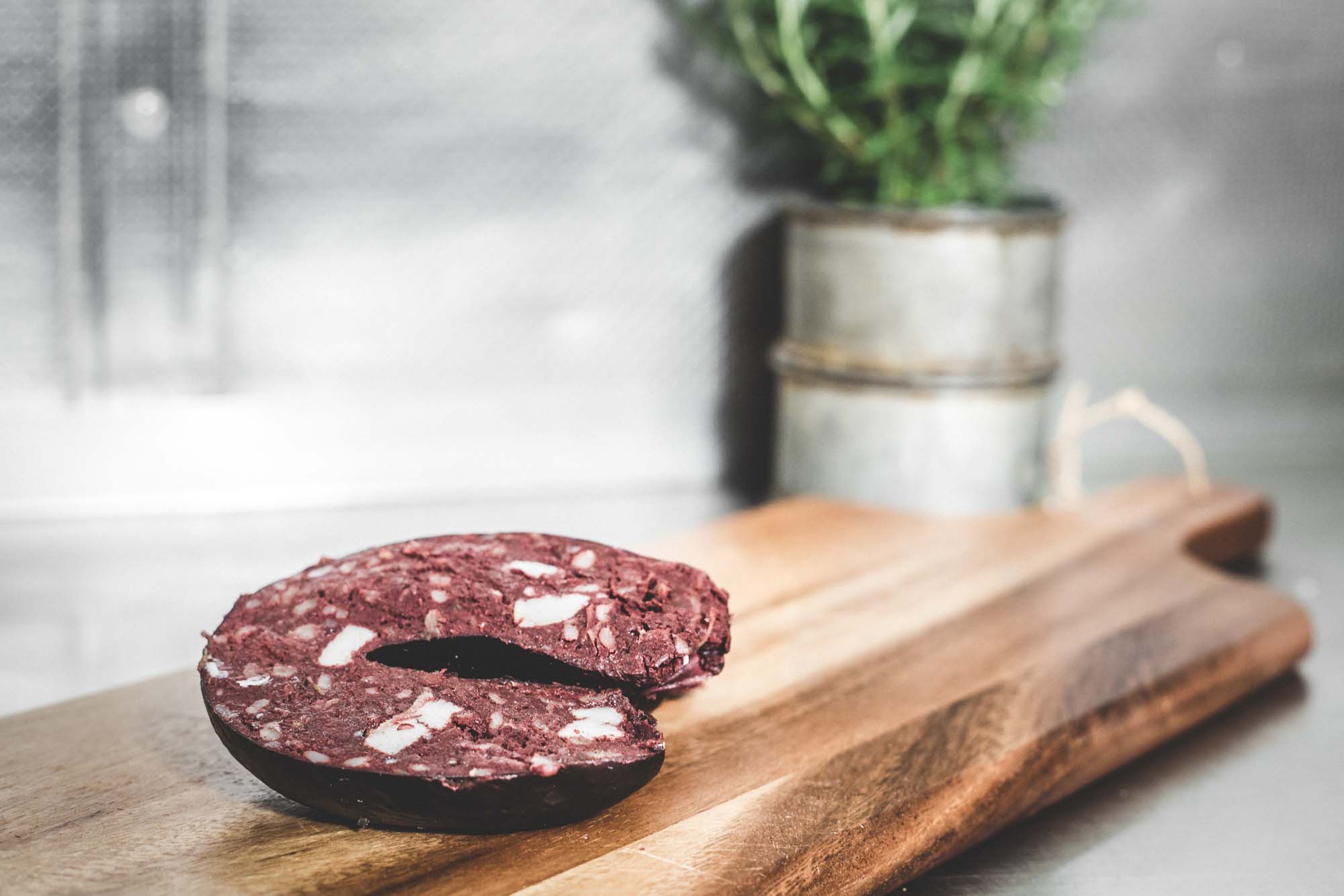The environment minister thinks we should eat more black pudding – and so do top chefs. Do you love it already, could you be tempted by a chocolate version or is blood sausage banned in your house?
It is the Marmite of the meat counter – dark, salty and you either love it or hate it. But black pudding is gaining in popularity, with a little help from celebrity chefs, manufacturers and even government minsters.
The environment minister recently listed the culinary concoction of blood, salt and rusk among the “must-eat” British foods that a new generation should be introduced to. The task may be harder than she imagines. I love the stuff, but my children are squeamish eaters and the very notion of a “blood sausage” brings about their swift exit from the kitchen.
I’ve tried to do my bit to persuade a new generation to the table. “It’s good for you,” is never the best line of attack (albeit true: black pudding is a great source of protein, iron, potassium, calcium and magnesium). So I try a different tack with chocolate and chilli black pudding, part of a new range produced by haggis manufacturer Macsween.
“Traditionally, black pudding manufacturers have not been very adventurous,’ says James Macsween. “But it does lend itself to being combined with other ingredients such as caramelised apple, rhubarb, pear, beetroot and any number of spices. We were experimenting with a range of flavour combinations when we hit upon chocolate.”
The result is surprisingly good: the smooth richness of the chocolate combines well with the basic black pudding. The Italians know this and have long been making sanguinaccio, a tart of pig’s blood and chocolate.
The Real Lancashire Black Pudding Company also makes a chilli pudding and its vegetarian variety is increasingly popular (they’re surprisingly coy about what’s in it), while the Bury Black Pudding company does a gluten-free version. Chef Paul Heathcote created a pudding that included champagne and vinegar-soaked sultanas.
These are novel twists to a dish that has been around for centuries. Homer refers to a stomach “filled with blood fat and roasted over a fire” in the Odyssey, while the annual World Black Pudding Throwing Championship dates back to 1455, when factions from Lancashire and Yorkshire met for battle but, finding themselves low on ammunition, resorted to pudding-throwing instead.
And the dish has always varied from region to region, in the UK and around the world. Traditional black-pudding-makers are secretive about their exact recipes, but the addition of spices including nutmeg, ginger and mace to the basic ingredients of dried blood, salt and oatmeal give regional black puddings their distinctive tastes. Some producers favour cow, ox or sheep blood over that of pigs, while others use suet, or barley instead of oatmeal. In Norway it is known as blodpølse; the French have boudin noir; morcilla is served in Latin America and Spain; and kashanka in Poland. In Asia, duck and goat blood is often used while in Europe, potato, sweet potato and rice replaced barley and oatmeal as filler.
Dave Motherfill, the head chef of the Coal Shed in Brighton, says the beauty of black pudding as an ingredient is that it lends itself to a variety of pairings. “It brings a richness to a dish and enhances the flavours of food such as pork, squid and fish. My favourite is Doreen’s black pudding, which is made with a lot of pork back fat, creating a deep, smoky, salty flavour that works well in a number of dishes.”
He is not alone; the manufacturers of Doreen’s black pudding recently extended their premises to cope with an upsurge in demand. Black pudding is no longer just for breakfast. It is eaten for Sunday lunch with pork and apple, used as a meaty addition to white fish or even served for dessert
I finally won my children over with fried chocolate and chilli black pudding, decorated with a few Smarties. The proof, as they say, was in the pudding. Two out of the three liked it. And once you have a taste for blood, it never leaves you.

